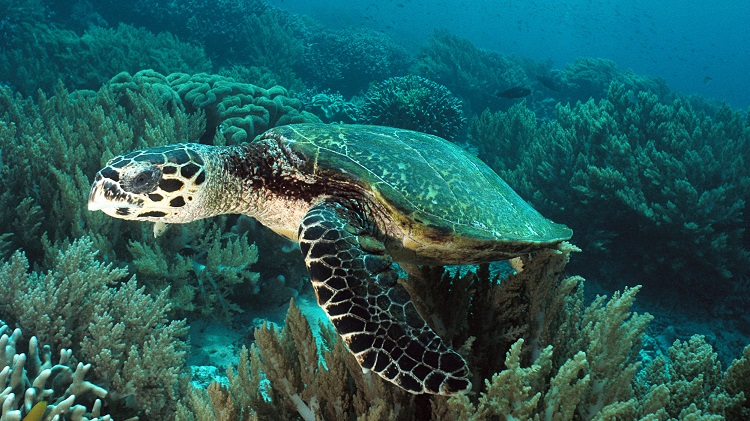
Arizona: The unlawful killing and trafficking of animals and plants, together with the climate issue, is one of the biggest dangers to wildlife biodiversity. The illegal wildlife trade is one of the world's most valuable clandestine enterprises, despite numerous laws prohibiting it.
Animals, particularly those from threatened and endangered species, are frequently exploited and sold for their pelts as well as utilized as food, medicine, aphrodisiacs, curios, and spiritual items.
Researchers from Arizona State University predict that between 1990 and 2020, more than 1.1 million sea turtles were illegally killed and, in some cases, trafficked, according to a recent study published in Global Change Biology. Over the past ten years, up to 44,000 sea turtles have been exploited annually in 65 nations or territories and 44 of the 58 major sea turtle populations worldwide, despite the fact that there are laws in place that forbid their capture and usage.
Despite the apparently high number of turtles being poached, the analysis reveals a 28% drop in recorded unlawful exploitation of sea turtles over the previous ten years, surprising the researchers. At first, they anticipated a general rise in reported poaching.
According to Kayla Burgher, co-first author of the study and a doctoral student in ASU's environmental life sciences program in the School of Life Sciences, "The decline over the past decade could be due to increased protective legislation and enhanced conservation efforts, coupled with an increase in awareness of the problem or changing local norms and traditions."
The researchers discovered that, in addition to the minor drop, the majority of the recorded unlawful exploitation during the previous ten years took place in sizable, stable, and genetically varied sea turtle populations.
According to Jesse Senko, co-first author of the study and assistant research professor at Arizona State University's School for the Future of Innovation in Society, this finding could be a benefit given the large number of turtles that are being abused unlawfully. This indicates that, with a few exceptions, the current levels of unlawful exploitation are probably not having a significantly negative impact on the majority of major sea turtle populations throughout the world's oceans. The majority of these sea turtles come from healthy, low-risk populations.
Senko says that the findings should be carefully taken into consideration. "It's challenging to assess any illicit activity, and the taking and trading of sea turtles is no exception, particularly when it's organised or linked to criminal gangs. Additionally, eggs and turtle-related products like bracelets and earrings manufactured from sea turtle shells that couldn't be directly linked to specific turtles were not included in our assessment, according to Senko.
To conduct a thorough examination of the available data on exploited sea turtles, the researchers in the study evaluated data from peer-reviewed journal publications, historical media accounts, NGO reports, and online questionnaires. Additional patterns and trends were found by the study, which may help choose conservation management objectives. For instance, China and Japan were the most popular final destinations for nearly all products derived from illegal sea turtle trafficking, while Vietnam was the most frequent country of origin. Similar to that, the most popular trade route for all three decades was from Vietnam to China.
95% of the sea turtles that were poached during the course of the 30-year study period belonged to either the green or hawksbill species, both of which are protected under the U.S. Endangered Species Act. Additionally, Southeast Asia and Madagascar have emerged as key centres for the illegal capture and trading of sea turtles, particularly the critically endangered hawksbills, who are valued for their exquisite shells in the black market for wildlife.
"Our analysis serves as a crucial starting point for upcoming studies and communication initiatives pertaining to unlawful sea turtle harvesting. We believe that by prioritizing conservation efforts and helping legislators distribute money, this study can help safeguard sea turtle populations from hazardous levels of exploitation on a global scale "Declares Burgher.
The research team claims that much more work must be done to preserve biodiversity on a global scale.
Along with support for communities to maintain human well-being in the face of limitations or prohibitions on sea turtle exploitation, increased support for governments without the means to protect sea turtles is required. Senko thinks that we must create conservation plans that are advantageous to both people and turtles. (ANI)







